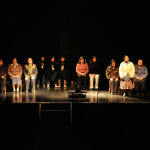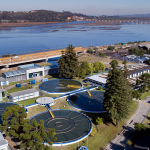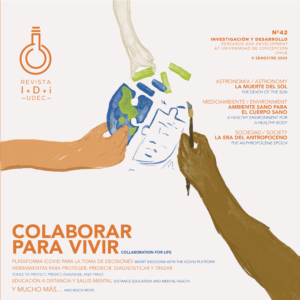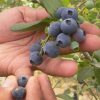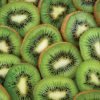Contemporary art practices have experienced a strengthening of community and territorial links, which is confirmed in the experience of two visual artists graduated from the Universidad de Concepción Visual Arts School.
By Nicole Villanueva and Gonzalo Medina / gomedina@udec.cl
/ Photographies: Rosa Valdivia and Felipe Duhart
Currently, contemporary art is conceived as an aesthetic reflection of the inhabited world, allowing artists to reveal and transform it. Thus, the complexity of each territory permeates the themes and forms of artistic production, so speaking of this relationship refers, on the one hand, to that art located in a geographical area and its context, and on the other hand, to that form of production established from the relational incorporating techniques as well as topics of everyday life.
According to these new lines of action, the Visual Arts career was created in 2005 at the Universidad de Concepción, after evaluating the old Bachelor degree of Fine Arts with specialization in different areas. Thus, through the efforts of the Faculty of Humanities and Arts and the director of the Department of Plastic Arts back then, the visual artist, researcher and academic Jorge Pasmiño, was in charge of the creation of a new curriculum map to the art historian, theoretician and academic Bárbara Lama, developing a collaborative work with teachers per area, proposing a new contemporary approach and a comprehensive curricular structure for the training of professional artists.
“The students who are currently graduating have a high level of awareness regarding what they want to do, with a conceptual framework that is important to them and which they seek. It is a strength which stands out”, says Lama. From her perspective, this new structure emphasized on the project, and on the understanding of the work: “There are students who come with very interesting initiatives and with a search for the trade, with theoretical frameworks and with contemporary political projects,” she highlights.
MADE IN COLIUMO
Eduardo Escobar (Felipe Duart) and Rosa Valdivia belong to the first generation of the new Visual Arts career in 2006. Valdivia underlines the professional training she received in the field of cultural management: “As an agent I have been able to develop a career which has allowed me to delve into the understanding of the Visual Arts with a broad perspective, from the proposal of independent projects, the coordination of exhibition cycles for private institutions and the implementation of the National Policy of Visual Arts in the public sector. All these experiences have been significant and they have defined the way I face Visual Arts as a complex framework, in which numerous challenges and positions are presented not only in terms of production, but also in terms of circulation, education, mediation, territorial connection, commercialization, among others”.
During 2014, Duart and Valdivia participated in CasaPoli, a space designed by the architects Pezo Von Ellrichshausen, whose objective -until a couple of years ago- was an artistic creation residence, dedicated to the development and mediation of Contemporary Art in the locality of Coliumo. The experience at CasaPoli allowed Rosa to immerse herself with greater awareness in the community sense of her work, or as she mentions, “territorial”, and to open herself to other poetic and mediation possibilities for her work. Her project called Weed Weaver (2014) consisted of taking walks in Coliumo collecting long grass that grows along the roadside and in uninhabited places, which she then cut, spun and crocheted to form a 150x150cm mantle, giving a new life and value to this weed: “Changing my work context for a few weeks and facing the possibilities as well as the difficulties offered by a particular territory, made me discover something that I had not previously perceived in my way of doing things. I started to push my self-imposed boundaries, in order to look at textiles beyond my family history and beyond its traditional forms and materialities”, she commented.
On the other hand, the work carried out by the artist Felipe Duart at CasaPoli created an important community bond. His work Manual of trade for Coliumo (2014), required that he get involved with the community and to value the trades generated inside of it, day by day, being a collaborator and participant in this daily life. “I was going every day to mend nets. I got up at 5 in the morning to shellfish, then I had to go to harvest a seaweed called luga. It was a week-long practice dwelling with the people. This research allowed me to be able to illustrate them and make a trade manual for all of them”, says Felipe.
Both Valdivia and Duart agree on how significant these experiences were in the Biobío region, and how enriching it is to dialogue with the community, identifying their daily plots, coincidences, social emergencies, as well as establishing links between the visual arts and their social context.
For more information, please contact:
http://artesplasticasyvisuales.udec.cl


